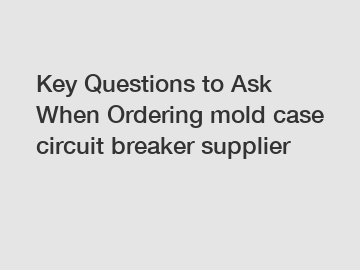How long can emergency light batteries run during an outage?
Emergency lights are crucial for providing illumination during power outages or emergencies, ensuring safety and security in various settings such as residential buildings, commercial spaces, hospitals, and schools. One of the critical components of emergency lights is their battery, which determines how long they can operate when the main power source fails. In this comprehensive guide, we delve into the factors that influence the duration of emergency light batteries during an outage, offering valuable insights and tips to maximize their performance when you need them the most.

Battery Types for Emergency Lights
Sealed Lead Acid (SLA) Batteries
Sealed Lead Acid (SLA) batteries are commonly used in emergency lights due to their reliability and cost-effectiveness. These batteries come in various sizes and capacities, ranging from small units for individual fixtures to larger batteries for centralized emergency lighting systems. SLA batteries utilize lead plates submerged in an electrolyte solution, sealed in a maintenance-free casing to prevent leakage.
Nickel-Cadmium (Ni-Cd) Batteries
Nickel-Cadmium (Ni-Cd) batteries are another popular option for emergency lights, known for their durability and ability to withstand frequent discharges. These batteries feature a nickel oxide hydroxide cathode, a cadmium anode, and an alkaline electrolyte solution. Ni-Cd batteries are known for their long cycle life and tolerance to extreme temperatures, making them suitable for harsh environments.
Nickel-Metal Hydride (Ni-MH) Batteries
Nickel-Metal Hydride (Ni-MH) batteries offer a higher energy density compared to Ni-Cd batteries, providing longer runtimes in emergency lighting applications. These batteries utilize a hydrogen-absorbing alloy instead of cadmium, making them more environmentally friendly. Ni-MH batteries are known for their low self-discharge rates and minimal memory effect, ensuring consistent performance over multiple charge cycles.
Factors Affecting Emergency Light Battery Life
Battery Capacity
The capacity of an emergency light battery, measured in ampere-hours (Ah), indicates the amount of energy it can store and deliver during a power outage. Higher capacity batteries can provide longer runtimes, ensuring extended illumination when needed. When selecting emergency light batteries, consider the specific power requirements of your fixtures and choose batteries with adequate capacity to meet your runtime needs.
Load Characteristics
The load characteristics of emergency lights, including the number of fixtures connected to a single battery and their wattage, significantly impact battery life during an outage. Higher wattage fixtures and multiple connected units can drain the battery faster, reducing the overall runtime. It's essential to balance the number and wattage of fixtures to optimize battery life and ensure sufficient illumination during emergencies.
Temperature Conditions
Temperature conditions play a crucial role in determining the performance of emergency Lighting batteries. Extreme temperatures, both hot and cold, can affect battery capacity and efficiency, leading to reduced runtime during outages. Batteries exposed to high temperatures may experience accelerated degradation and shorter lifespans, while cold temperatures can increase internal resistance and decrease performance. To maximize battery life, ensure that emergency lights are installed in temperature-controlled environments and choose batteries rated for a wide operating temperature range.
Related links:How Solar emergency charging lamp Work?
Maintenance and Testing
How Does automotive agm start-stop battery Work?
How much do you know about charging piles?
Exploring the Advantages of 40kW DC Chargers for Electric Vehicles
Lifepo4 delivery issue.Anyone has experience? - Lowyat Forum
LiFePO4 Vs Lithium Ion & Other Batteries & Why ...
Ryobi 6-port charger, not for battery storage
Regular maintenance and testing are essential to ensure the optimal performance of emergency light batteries. Periodic inspections, including visual checks for damage or corrosion, as well as functional testing of the entire emergency lighting system, can identify potential issues and prevent malfunctions during outages. Additionally, proper battery maintenance, such as cleaning terminals and ensuring a secure connection, can extend battery life and reliability.
Tips to Maximize Emergency Light Battery Life
Invest in High-Quality Batteries
Choosing high-quality Custom batteries from reputable manufacturers is crucial for maximizing emergency light battery life and performance. Opt for batteries with advanced technologies and reliable construction to ensure durability, efficiency, and long-term reliability.
Proper Installation and Positioning
Proper installation and positioning of emergency lights are essential for optimizing battery life and ensuring effective illumination during outages. Install lights in strategic locations to provide adequate coverage and visibility, considering factors such as exit routes, obstacle clearance, and mounting heights.
Regular Testing and Maintenance
Establish a routine testing and maintenance schedule for emergency lighting systems to detect any issues early and prevent failures during emergencies. Perform monthly functional tests, including a full discharge test, to verify the readiness and performance of the batteries and fixtures. Address any issues promptly and replace batteries as needed to maintain optimal performance.
Temperature Control
Maintain temperature control in areas where emergency lights are installed to prevent extreme temperature conditions that can impact battery performance. Ensure proper ventilation and insulation to regulate temperature and humidity levels, especially in enclosed spaces or outdoor environments.
Emergency Preparedness
In addition to maintaining emergency light batteries, develop and implement a comprehensive emergency preparedness plan that includes procedures for power outages and other emergencies. Educate building occupants on emergency protocols and evacuation procedures to ensure a swift and orderly response during crises.
Conclusion
Emergency light batteries play a vital role in providing illumination and ensuring safety during power outages and emergencies. By understanding the factors that influence battery life and implementing best practices for maintenance and optimization, you can maximize the performance and reliability of your emergency lighting system. Invest in high-quality batteries, conduct regular testing and maintenance, and prioritize temperature control to ensure that your emergency lights are ready to shine when you need them the most.
Related links:What are the Key Questions to Ask When Ordering Diamond Cylinder Polish Tools?
How to Choose Diamond Stylus For Rotogravure: A Complete Guide
4 Tips to Select an ABB Permanent Magnet Motor
How Does XYZ Innovations Group Achieve Success?
Key Considerations for Choosing the Right Solar Panel System for Your Home
4 Tips to Select the Best High-Performance Solar Panels
How Does Advanced Solar Panel Technology Work?











